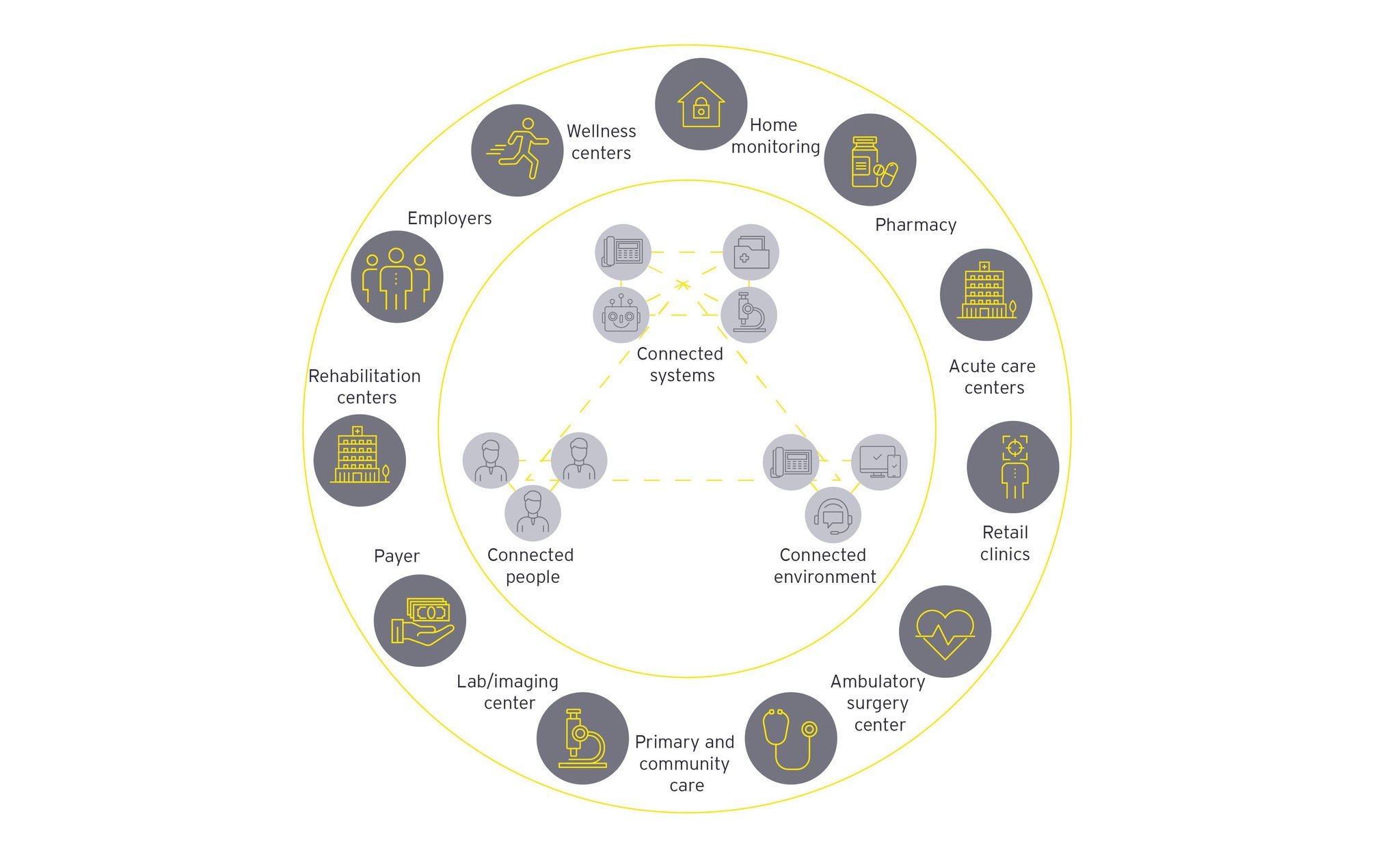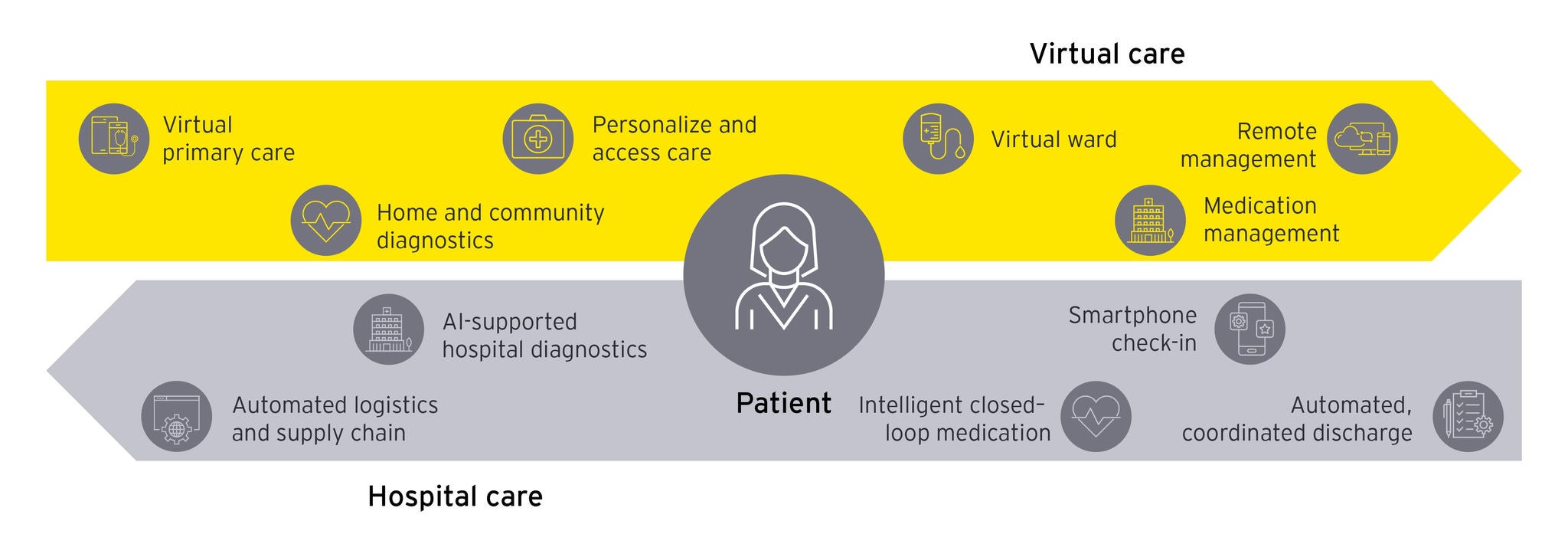EY refers to the global organization, and may refer to one or more, of the member firms of Ernst & Young Global Limited, each of which is a separate legal entity. Ernst & Young Global Limited, a UK company limited by guarantee, does not provide services to clients.
How EY can Help
As we build a combination of physical and virtual spaces, everyone and everything is connected. Embedded sensors in objects connect buildings and spaces, allowing control of the physical environments and easy location of equipment, materials and personnel. Connected systems collect, process, and distribute data. This allows for real-time intelligent decision making about people, the physical environments, and systems. In addition, user experiences are enhanced by seamlessly integrating information sources and having them available across many devices.
A digital backbone will underpin the smart health care system. This is a system-level infrastructure architecture that serves a three-part purpose: safe clinical care, appropriate automation of clinical and back‑office operations, and the delivery of personalized care and prevention. Core information systems, such as EHRs, imaging and laboratory systems, all form part of the broader data ecosystem.
Building blocks of the digital backbone
- Accessibility: to deliver the right care at the right time to the right person
- Integration: where data are discoverable, liquid and able to be acted on, allowing for participatory, preventative and personalized care
- Intelligent: where AI and analytics turn complex information into usable insights and new solutions
- Scalability: able to extend across an entire population seamlessly
Redesigning the way that services are delivered will transform how care is organized and experienced. Better alignment with consumers’ expectations and preferences brings a clear recognition that consumer and clinician experiences matter.





